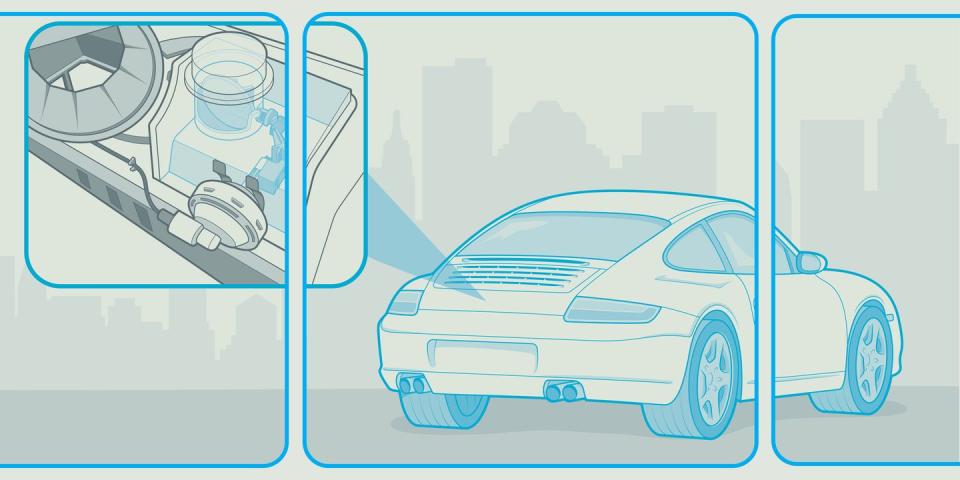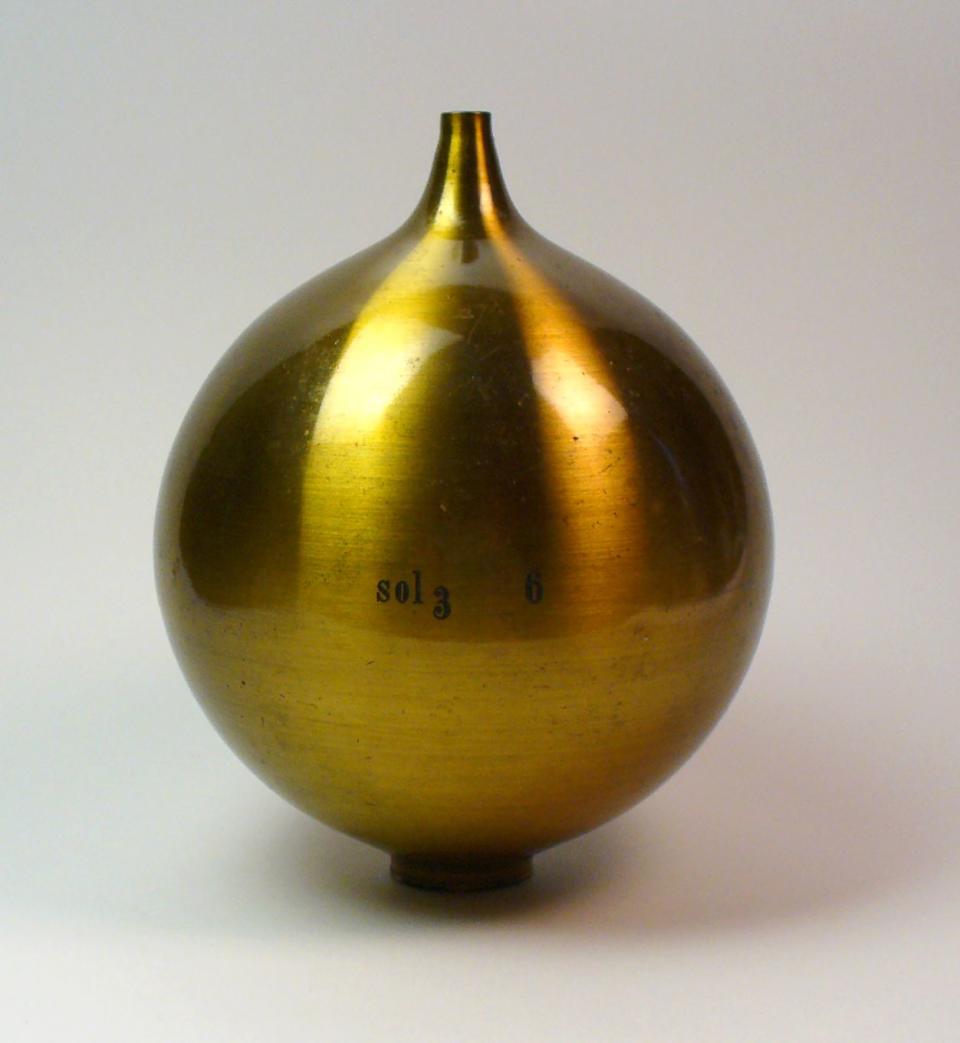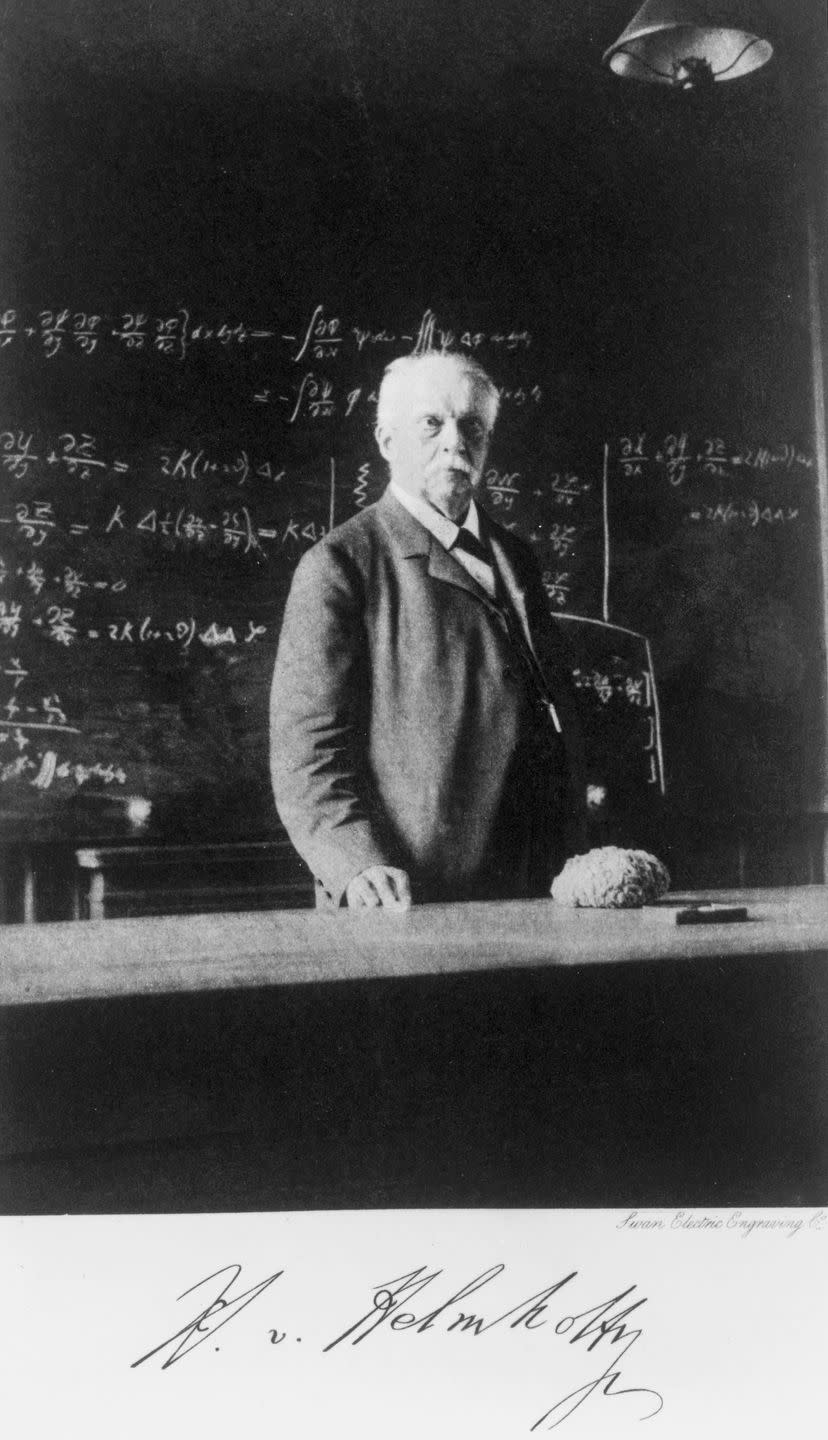How a Device Invented In the 1860s Makes for Better-Sounding Porsches

In either the 1850s or 1860s, German physicist Hermann von Helmholz created a device to analyze sound. In 2005, that same sort of device made its way into the airbox of the new 3.8-liter flat-six of the Porsche 911 Carrera S. The reasons why are fascinating.
We must start with a discussion of sound. In essence, sounds are just pressure waves that vibrate our eardrums. The frequency of the oscillation, measured in hertz, defines the sound's pitch. Most sounds, however, are not just one pitch. Strike a note on a piano, and you hear the primary note, a fundamental, plus a number of other, much quieter notes. These other pitches are part of what's called the overtone (or harmonic) series, and the volume of each overtone is what defines the quality, or timbre, of the sound. It's one of the primary reasons the same note played on a piano and an electric guitar sound so different. (A sound made up of just one pitch is a sine wave.)

Helmholtz wanted to analyze the makeup of sounds, so he created small brass spheres that resonate at a certain frequency when air is blown over the top. We now call these Helmholtz resonators. The volume of the air within the sphere determines the pitch at which the sphere resonates. It's basically a fancy version of what happens when you blow over the top a glass bottle. The amount of liquid in the bottle, which determines the volume of air, defines the pitch.

Strike a piano key and hold up a Helmholtz resonator of a specific certain size—and thus, pitch—to your ear, and if it resonates sympathetically, you now know at least one of the overtones that defines the timbre. It's a laborious and inexact method, but it was critical in furthering our understanding of sound. And a number of decades after their inventions some clever automotive engineers realized that Helmholtz resonators held interesting potential for internal-combustion engines.
But before we get to cars, we have to stay on the physics of sound, specifically the phenomenon of phase cancellation. In recorded audio, when two sounds of the same frequency but opposite amplitude are made at the same time, they effectively cancel eachother out, resulting in silence, or near-silence. Noise-canceling headphones use this phenomenon to drown out anything unpleasant. Microphones on the headphones pick up the sounds occurring in the environment, and play those same frequencies at the opposite amplitude in your ears. You can do the same sort of thing with a Helmholtz resonator. (And here, when we talk about a "Helmholtz resonator," we're not talking specifically about the brass spheres created by the German physicist, but a device of any shape that serves the same function.)
A patent filed by General Motors engineer Ernest E Willson in 1930 (seen above) describes a device consisting of multiple Helmholtz-type resonators—though he doesn't label them as such—to attenuate undesirable induction noise in internal-combustion engines. By tuning the resonators to resonate at the same frequency as certain tones created by the intake, you can effectively cancel them out, or at least make them much quieter. He updated his design, as detailed in a 1936 patent, with a device of variable volume that can be used in both the intake and exhaust systems of cars. Also in that patent, he notes his earlier design was "now commonly used."
Over the years, Helmholtz resonators of various types proliferated throughout the automotive industry and beyond. In the Nineties, automotive engineers started working to tune automotive nosies to create an appealing soundtrack for enthusiasts. Mazda is generally credited with being the first, with the original Miata's aural signature patterned after the Sixties euro roadsters from which it drew inspiration. (It was mostly successful, though Mazda could never replicate the burble of a Lotus Elan or Alfa Romeo Spider on dual twin-choke Webers with just one throttle body.) After the Miata, a number of automakers began working on "sound design" for their performance cars. Porsche figured out that Helmholtz resonators could have a big effect on not just reducing an engine's noise, but improving the sound.
"If you’ve got a handle on Helmholtz, you’ve got the sound under control," said Porsche's Dr. Bernhard Pfäfflin in an article in the company's magazine, Christophorus. Helmholtz resonators took a place of prominence in Porsche's first water-cooled flat-six, the M96. This is also the era where plastic use became more prominent in internal-combustion engines, allowing for the cheap and easy implementation of Helmholtz resonators. In both the 986 Boxster and 996 911 Carrera, a Helmholtz resonator lives in the airbox, just before the throttle valve. The idea, as the late Paul Frere described in his Porsche 911 Story, was to produce a "pleasant, sporting but subdued roar."
The neat installation you see illustrated above is found in the airbox of the 997 Carrera S, where the volume of the Helmholtz resonator is defined by a vacuum-operated butterfly valve. Both the M96 and M97 flat-six used a novel intake system with plenums above either cylinder banks connected by two pipes of different lengths. Valves within the pipes open and close at different engine speeds and loads to regulate airflow into the combustion chambers, to take advantage of the resonance supercharging feature we talked about earlier this month. This setup helps improve volumetric efficiency, but it can also lead to undesirable noise. In the 3.8-liter flat-six from the 997 Carrera S, the Helmholtz resonator's volume changes based on the arrangement
In the last naturally aspirated 911 Carrera, the 991.1, Helmholtz resonators were actually used to accentuate, rather than attenuate certain frequencies. Think back to the overtone series—a Hemholtz resonator will resonate sympathetically when presented with a certain pitch, adding to the tonal profile. As a 2019 article from Excellence describes, two Helmholtz resonators work with the car's "sound symposer," a system with ducting between the intake pipe and the firewall that helps increase exhaust noise in the cabin. The first is within the ducting, and opens up when the driver selects Sport mode, amplifying the sound from the intake, while the other, residing within the airbox itself, increases intake sound between 4500 and 6000 rpm.

A similar system with two sound symposers is employed in the turbocharged flat-six introduced for the 991.2 Carrera in 2016 and used in today's 992 Carrera models. In four-cylinder 718 Boxster and Cayman models, a Helmholtz resonator is used in the exhaust system to quell some of the harshness normally associated with a flat-four engine.
Automakers love anything that can have a big effect on a car, without cost, weight, or complication. Given that, it's easy to see why a device as unlikely as the Helmholtz resonator became so important in internal-combustion engines. There's hardly, if any, cost or weight penalty, yet the upsides are numerous.
I can say this with a bit of confidence, as I own a 987-generation Porsche Boxster. The intake sound filling the cabin might be the best thing about the car.
You Might Also Like

 Yahoo Autos
Yahoo Autos 